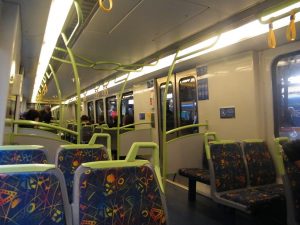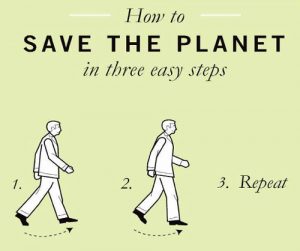| Average Australian home* | $17000 a year/17 hours a week per person* |
|---|---|
| Smart renter | $9000 a year/10 hours a week per person |
| Very smart renter | $2000 to $5000 a year/6-8 hours a week per person |
*See Getting around article for how this was calculated.
You could say the car is the bread and butter of Australian passenger transport but like any buffet, it doesn’t make sense to fill up on bread without savouring some of the other options.
- Going car free is the holy-grail of cheap, clean, safe and healthy transport. It involves a mix of walking, riding, public transport and occasional car use if need be. You can even work less by going car free.
- If you are not planning to get rid of your car anytime soon, there are options to reduce car costs, particularly if you can share a car as a household.
We’ll briefly go through a few transport options for smart and very smart renters:
Self-Propelling ($0.05 to $0.10 per kilometre)
“carfreeday-2008” by Spacing Magazine is licensed under CC BY-NC-ND 2.0
- For walking distances of 2 kilometres or less for regular trips and for cycling distances of 10 kilometres or less, getting around under your own steam is the ultimate in transportation.
- It is super cheap, great for your physical and mental health, puts you in touch with your neighbourhood, saves you the time spent working for a car and has car like convenience over short distances.
- Studies have shown that people who ride and walk regularly lead longer and healthier lives than people who only drive despite the perceived risks of walking and riding.
- Bad weather can be easily overcome in most cases; The commuter bike has an easy trick to deal with all weather conditions whilst walkers can carry an umbrella/spray jacket for wet weather.
- In any case, being outdoors more often acclimatises you to all but the most extreme heat and cold.
Public transport ($0.10-$0.20 per kilometre)
- As of 2016 public transport and car travel were both roughly subsidised at $0.38 per kilometre, yet the private costs (that is, what you pay) of public transport are loads cheaper.
- Bikes can be combined with public transport, and folding bikes can be used if you regularly combine cycling and public transport.
- Public transport is 30 times safer than travelling the same distance by car and actually saves you time because you can read, sleep or do a heap of other things whereas in a car all you can do is drive.
- The only downside to public transport is that it is sometimes irregularly timetabled or some areas are not serviced at all.

“Bayswater Train” by Tram Painter is licensed under CC BY-NC-ND 2.0
Occasional car use (more than $0.50 per kilometre)
- Occasional car use can be useful for covering ocassional trips that can’t be done by walking, riding or public transport.
- Taxis, rideshare cars, hire cars and car sharing are an expensive way to get around but if you do the vast majority of your trips without a car, than getting a car when you need it makes sense.
- If you don’t own a car and rarely encounter situations where you need one, it can be really helpful if someone gives you a lift in these situations. But this should not be expected.
- If there’s the possibility of sharing a lift, offer to pay your share and have a back-up plan (taxi for example) if someone can’t give you a lift.
Car ownership ($0.50 per kilometre)
- In some instances, cars make sense for trips where the distances are too great for cycling or walking, yet there’s not enough demand for good regular public transport in some locations or at certain times of the day.
- In the case of some service providers (tradespeople for example), a car is necessary for regularly carrying heavy loads. So we’ve included a section on reducing car costs.
A smart renter can locate themselves near to public transport or within walking/cycling distance to amenities so that they can make do with one car that is cheap, durable and well maintained.
A very smart renter can locate themselves near to amenities and reasonably close to good public transport combined with walking/cycling which means they can go car free with the exception of a very small amount of paid car use each year.
Read more: Getting around article
